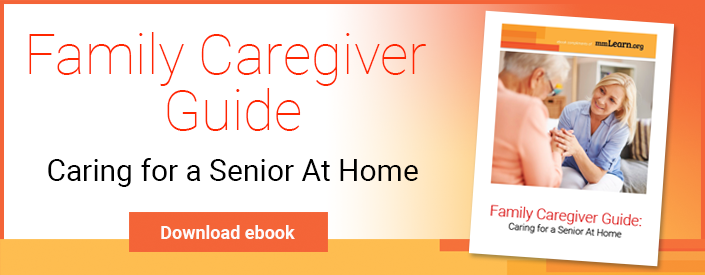 Though it’s easy to think of bedsores as a mere nuisance when you’re caring for aging seniors, this painful skin condition can become debilitating and even deadly when left untreated. Unfortunately, bedsores can develop even with great caregiving efforts. There are few ways to help prevent these painful pressure ulcers.
Though it’s easy to think of bedsores as a mere nuisance when you’re caring for aging seniors, this painful skin condition can become debilitating and even deadly when left untreated. Unfortunately, bedsores can develop even with great caregiving efforts. There are few ways to help prevent these painful pressure ulcers.
Let's take a closer look at this common senior health issue, along with causes and prevention.
What Are Bedsores?
According to Mayo Clinic, “Bedsores — also called pressure ulcers and decubitus ulcers — are injuries to skin and underlying tissue resulting from prolonged pressure on the skin.” Seniors confined to beds or wheelchairs for long periods are particularly vulnerable to bedsores because of their limited ability to change positions.
In addition to being caused by sustained pressure, bedsores can result from the following:
- Friction, or rubbing, caused by movements such as dragging a person’s body over sheets during transfers
- Shear, which Cleveland Clinic describes as “a dragging force between the skin and another surface.” To understand shear, picture the way two surfaces move against each other in opposite directions, such as the slipping movement of a senior’s body when a hospital bed is raised or lowered
- Any combination of pressure (caused by gravity), shear, and friction
Bedsores most commonly occur on skin on and around the body's bony areas, such as the tailbone, ankles, heels, hips, shoulder blade, spine, and backs of arms and legs. You might also notice that bedridden seniors are also prone to developing sores along the back and sides of their heads, including the ear rims.
The Four Stages of Bedsores
The National Pressure Ulcer Advisory Panel has defined four severity‑based stages of bedsores.
- In the first stage, skin unbroken skin begins to appear red or discolored. Seniors might report that the area feels painful or tender to the touch.
- In the second stage, the skin's outer layer and part of the underlayer become damaged, resulting in a shallow pink or red wound that looks like a blister.
- In the third stage, the ulcer becomes a deep, crater‑like wound that might even reveal fat and dead tissue. The damage at this stage could begin penetrating beneath the primary wound to the healthy skin below.
- In the fourth and most severe stage, bedsores likely contain dead tissue and exposed bone, muscle, and tendons.
The further bedsores progress, the harder they become to treat and cure.
Understanding Seniors’ Risk for Pressure Ulcers
In addition to immobility, several other factors increase the risk of bedsores. These include the following:
- The fragility of older skin
- Loss of sensory perception and the resulting inability to feel discomfort
- Weight loss
- Poor nutrition and inadequate hydration
- Excess skin moisture or dryness
- Incontinence
- Medical conditions which affect blood flow
- Smoking
- Limited mental awareness
- Frequent muscle spasms
Seniors typically experience some of these symptoms as they age, contributing to the fact that approximately two‑thirds of pressure ulcers occur in people ages 60‑80.
Tips to Prevent Pressure Ulcers
The best way to prevent bedsores is through frequent position changes, adequate skincare, healthy eating, quitting smoking, and regular exercise.
Awareness and vigilance are incredibly important. As the U.S. National Library of Medicine tells seniors, “You, or your caregiver, need to check your body every day from head to toe. Pay special attention to the areas where pressure ulcers often form.”
This 5‑minute demonstration video offers helpful information about in‑bed positions, including tips for determining how often—and when—to reposition seniors to prevent bedsores.
Treatment for Pressure Ulcers
Unfortunately, bedsores can occur very quickly and are challenging to treat once they develop. Left untreated, bedsores can trigger several medical complications, including the following:
- Sepsis
- Cellulitis
- Bone and joint infections
- Cancer
If you are caring for someone showing early signs of a bedsore, first relieve pressure by changing the senior’s position. If there is no improvement within the next 24 to 48 hours, follow up with a medical professional.
Treatment will typically involve a multidisciplinary approach, including specialists in wound care and wound management. Physical therapists, social workers, and dietitians can also be invaluable resources for caregivers managing bedsores.
Treatment for pressure ulcers must include infection prevention and healing for the existing wound. Interventions may include the following:
- Proper cleaning and dressings (an important part of keeping bedsore wound clean, preventing infection, and promoting healing)
- Pain management
- Antibiotics
- Changes in diet
- Incontinence management
- Muscle spasm relief
- Negative pressure therapy
- In extreme cases, surgery may be required
Remember, bedsores don't just impact aging seniors—they also impact the family members and caregivers who care for them.
If treating, managing, and preventing bedsores becomes overwhelming, there are community resources available offering everything from education to support services. The sooner you reach out, the sooner you and your aging loved one or patient can start feeling relief.

